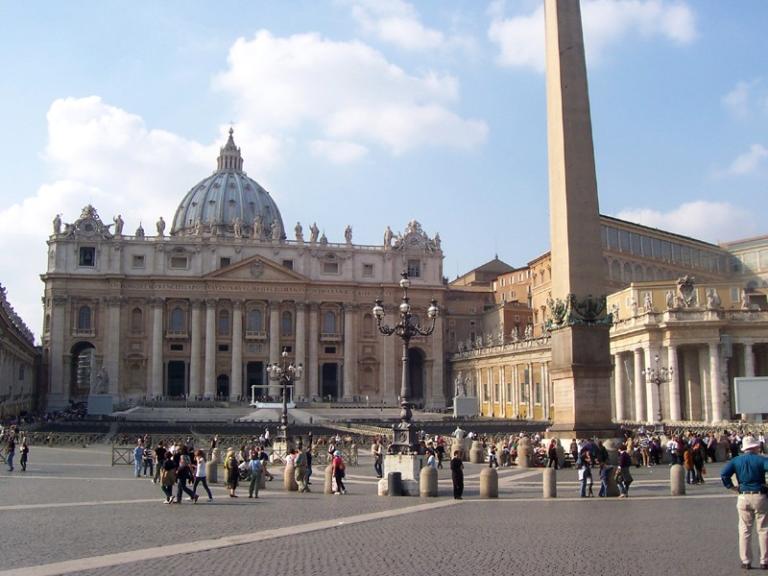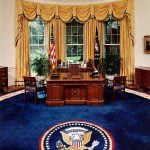
Bill Hamblin and I launched our series of columns on world religions for the Deseret News back in 2012. I submitted this column as our inaugural article:
When an advisor warned him against conflict with the Catholic Church, Josef Stalin contemptuously demanded, “How many divisions does the pope have?” It was a rhetorical question. It presumed the obvious: With no army at all, what threat could the pope pose to Soviet tyranny?
Stalin’s presumption was wrong. Less than three decades after his death, the Catholic Church elected a Polish pope. This was a vital factor in the collapse of communism, not only in Poland but throughout eastern Europe. The triumphant homecoming of John Paul II soon after his election in 1978 demonstrated that the pope has many powerful “divisions.”
Blindness to the continuing power of religion is not limited to Kremlin atheists. In the mid- to late 1970s, as discontent with the rule of the Shah in Iran began to boil, both government and academic experts on the Middle East routinely downplayed it. After all, who were the Shah’s opponents? A ragtag alliance of bazaar merchants, led by Islamic clergy who, it seemed, had scarcely emerged from the Middle Ages. The Shah, by contrast, had a large and well-trained army. He had tanks. He had jet fighter aircraft. In a struggle between the twentieth century and the seventh, who could doubt the outcome?
For more than two decades now, the West has struggled to cope with the Islamic Republic of Iran. We have faced militant Islam in Algeria, in the Sudanese civil war, in Afghanistan, in Beirut and south Lebanon, in the Philippines, at the World Trade Center. Islamic fundamentalism will challenge us for years to come, abroad and at home.
The notion that the world is growing more secular — that, as technology and prosperity increase, religion inevitably loses its influence — is simply wrong. Stalin and his successors are gone; the pope remains. Even in the State Department, an awareness of religion as a forgotten dimension of diplomacy and political analysis begins to dawn.
The realization has hardly come too soon. Around the world, religions and religious people exercise not a diminishing, but an increasing influence on public affairs. India and Pakistan exist as separate countries because of divisions between Hindus and Muslims. Now Sikh activism complicates the scene. Extremist Catholics and Protestants in northern Ireland have kept their bloody conflict going for years. Ultra-orthodox Jews in Israel confront an ever more militant Palestinian Islamic movement. U.S. politicians court the Christian Right. Sportswear giant Nike recently capitulated to a coalition of unhappy American Muslims who threatened it with a boycott. Even the prosperous and largely secular Japanese have suffered from the deadly fantasies of a conspiratorial religious group armed with poison gas.
Of course, not all manifestations of religion in contemporary society are negative. While violent, frightening or bizarre elements of religion grab headlines, its most powerful effects are surely found in the private lives of ordinary people, in their work and families, in what they choose to value or reject, and how they respond to stress and sorrow. The surge of evangelical Christianity gives meaning and discipline to millions of Americans. Prison officials across the nation report that the spread of Islam and conservative Protestantism assists in rehabilitating inmates and lowering their rate of recidivism. Recent studies seem to confirm the power of religious belief to promote mental health, and even to aid recovery from illness and injury.
Religion is hardly dead. Fundamentalist Christianity flourishes in Brazil. In rural Guatemala, it may already have supplanted Catholicism. Mormonism, some say, is poised to become the first new global faith since Islam emerged from Arabia in the seventh century. U.S. Muslims now outnumber adherents of some of the so-called “mainline” churches. There will soon be more regular worshipers in the mosques of the United Kingdom than in Anglican churches. The Islamic prayer call echoes through Balkan cities where, not long ago, atheism was imposed by law and the practice of any faith at all was a criminal offense.
Religion is vibrantly, fascinatingly, alive.
Our essays will examine it around the world — Christian and non-Christian, ancient, medieval, and modern — from many perspectives. Religion is of virtually infinite interest and human significance (not to mention its importance in eternity). We hope that you share our enthusiasm for this richly varied and instructive subject.












